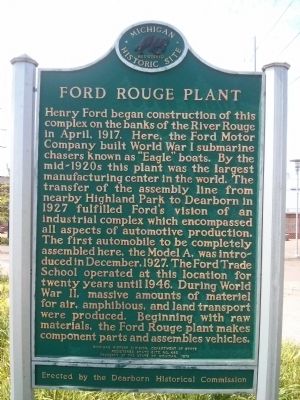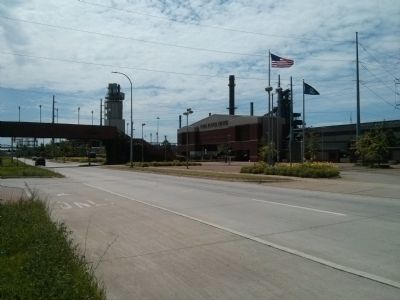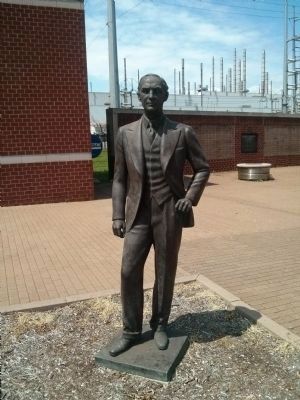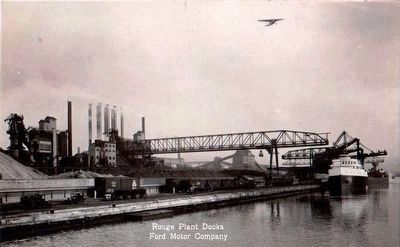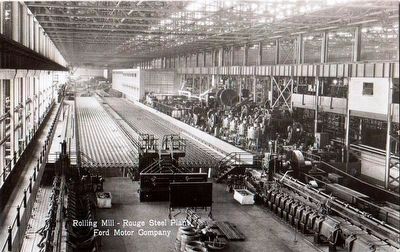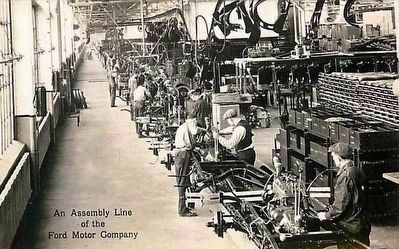Ford in Dearborn in Wayne County, Michigan — The American Midwest (Great Lakes)
Ford Rouge Plant
Erected 1978 by Michigan History Division, Michigan Department of State and Dearborn Historical Commission. (Marker Number S493.)
Topics and series. This historical marker is listed in these topic lists: Industry & Commerce • Roads & Vehicles. In addition, it is included in the Michigan Historical Commission series list. A significant historical month for this entry is April 1917.
Location. 42° 18.48′ N, 83° 9.371′ W. Marker is in Dearborn, Michigan, in Wayne County. It is in Ford. Marker is on Miller Road, 1.4 miles south of U.S. 12, on the right when traveling south. Touch for map. Marker is at or near this postal address: 3001 Miller Road, Dearborn MI 48120, United States of America. Touch for directions.
Other nearby markers. At least 8 other markers are within walking distance of this marker. Prelude To The (within shouting distance of this marker); Fort Street Bridge (within shouting distance of this marker); Henry and Edsel Ford (within shouting distance of this marker); Amphibian Jeeps (within shouting distance of this marker); Women Workers (within shouting distance of this marker); Henry Ford II (within shouting distance of this marker); Ford Negotiating Team (within shouting distance of this marker); Miller Road Overpass (within shouting distance of this marker). Touch for a list and map of all markers in Dearborn.
Related marker. Click here for another marker that is related to this marker. An identical marker in a different location...
Also see . . . History of the Rouge. The Henry Ford's detailed history of the Rouge Plant. (Submitted on July 20, 2015, by Joel Seewald of Madison Heights, Michigan.)
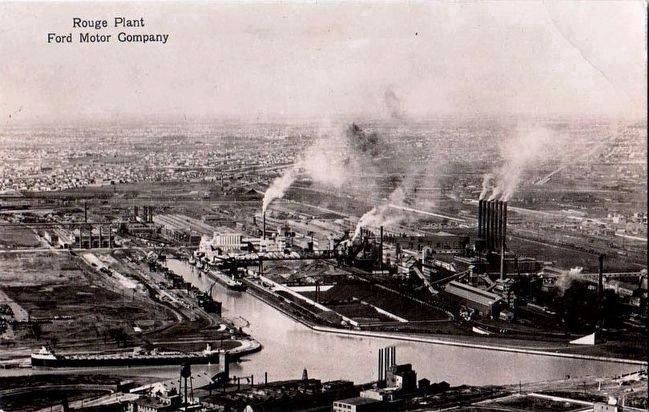
7. Rouge Plant, Ford Motor Company
Located a few miles south of Detroit at the confluence of the Rouge and Detroit Rivers, the original Rouge complex was a mile-and-a-half wide and more than a mile long. The multiplex of 93 buildings totaled 15,767,708 square feet of floor area crisscrossed by 120 miles of conveyors....
There were ore docks, steel furnaces, coke ovens, rolling mills, glass furnaces and plate-glass rollers. Buildings included a tire-making plant, stamping plant, engine casting plant, frame and assembly plant, transmission plant, radiator plant, tool and die plant, and, at one time, even a paper mill. A massive power plant produced enough electricity to light a city the size of nearby Detroit, and a soybean conversion plant turned soybeans into plastic auto parts....
The Rouge had its own railroad with 100 miles of track and 16 locomotives. A scheduled bus network and 15 miles of paved roads kept everything and everyone on the move.
It was a city without residents. At its peak in the 1930s, more than 100,000 people worked at the Rouge. To accommodate them required a multi-station fire department, a modern police force, a fully staffed hospital and a maintenance crew 5,000 strong. One new car rolled off the line every 49 seconds. Each day, workers smelted more than 1,500 tons of iron and made 500 tons of glass, and every month 3,500 mop heads had to be replaced to keep the complex clean. -- TheHenryFord.org
Credits. This page was last revised on February 12, 2023. It was originally submitted on July 16, 2015, by Joel Seewald of Madison Heights, Michigan. This page has been viewed 663 times since then and 27 times this year. Photos: 1, 2, 3. submitted on July 16, 2015, by Joel Seewald of Madison Heights, Michigan. 4, 5, 6, 7. submitted on September 22, 2015. • Andrew Ruppenstein was the editor who published this page.
